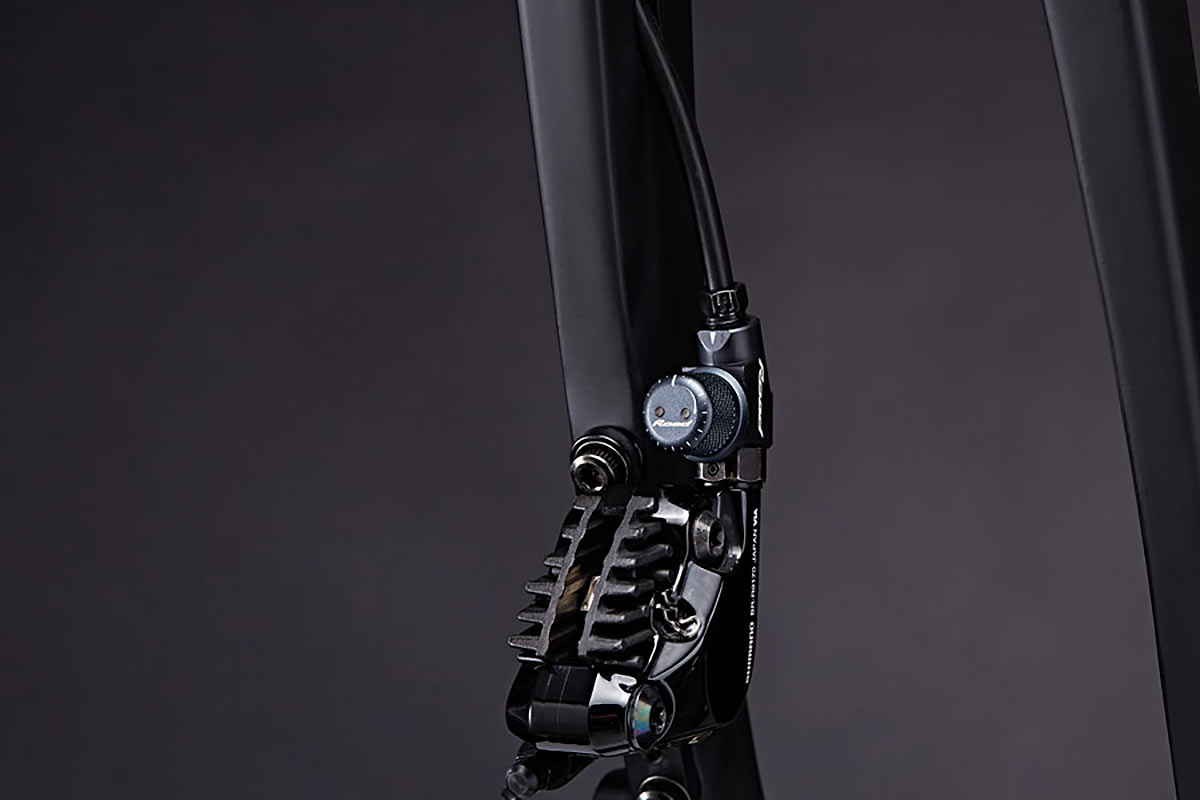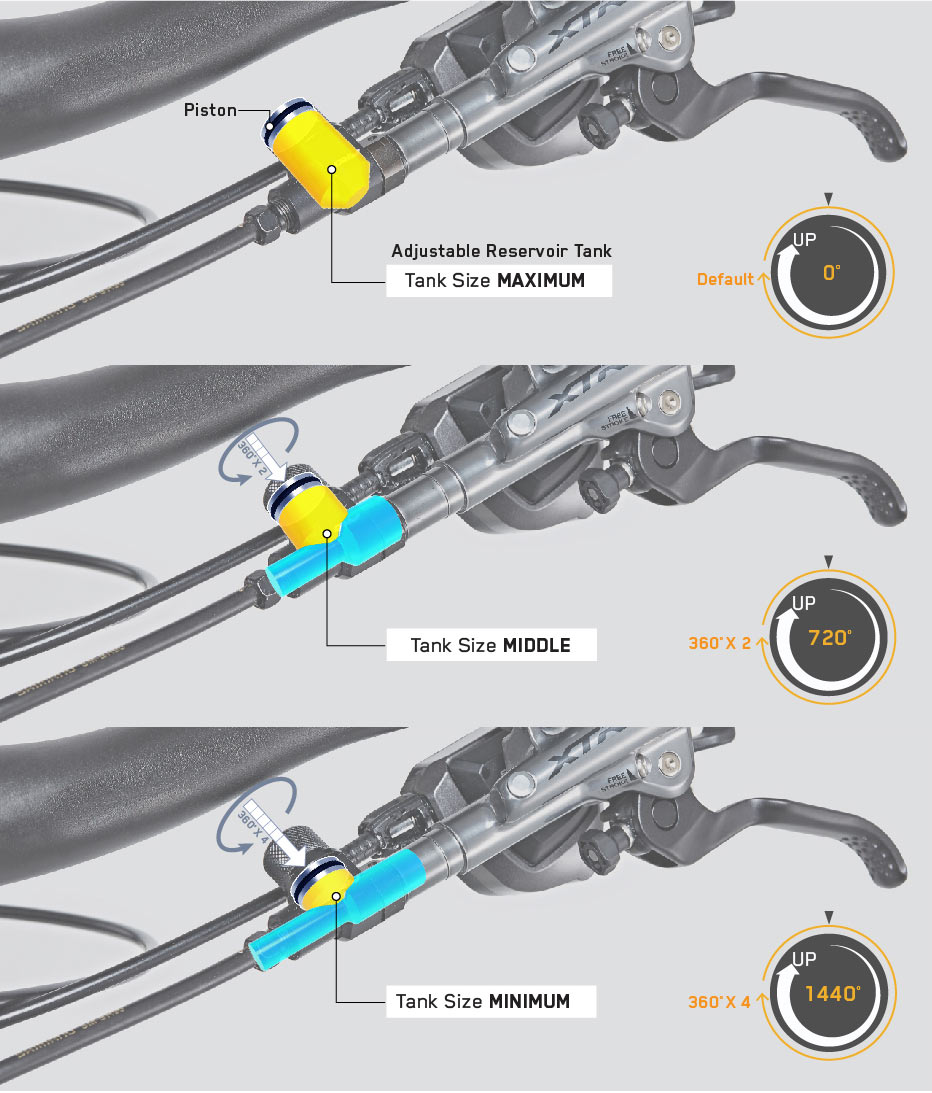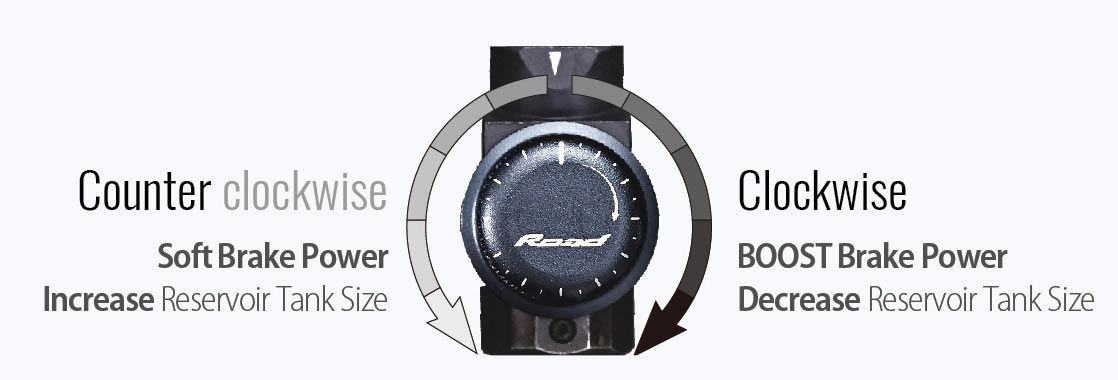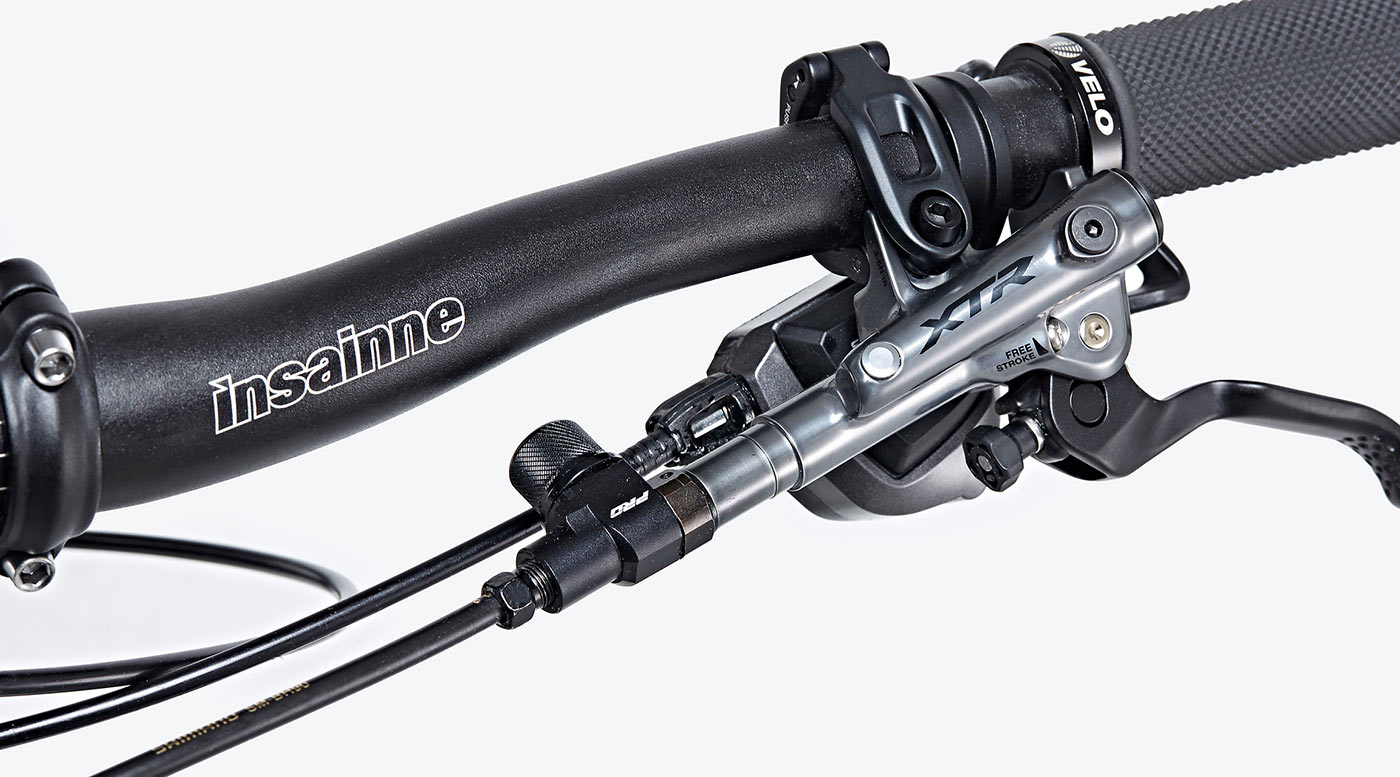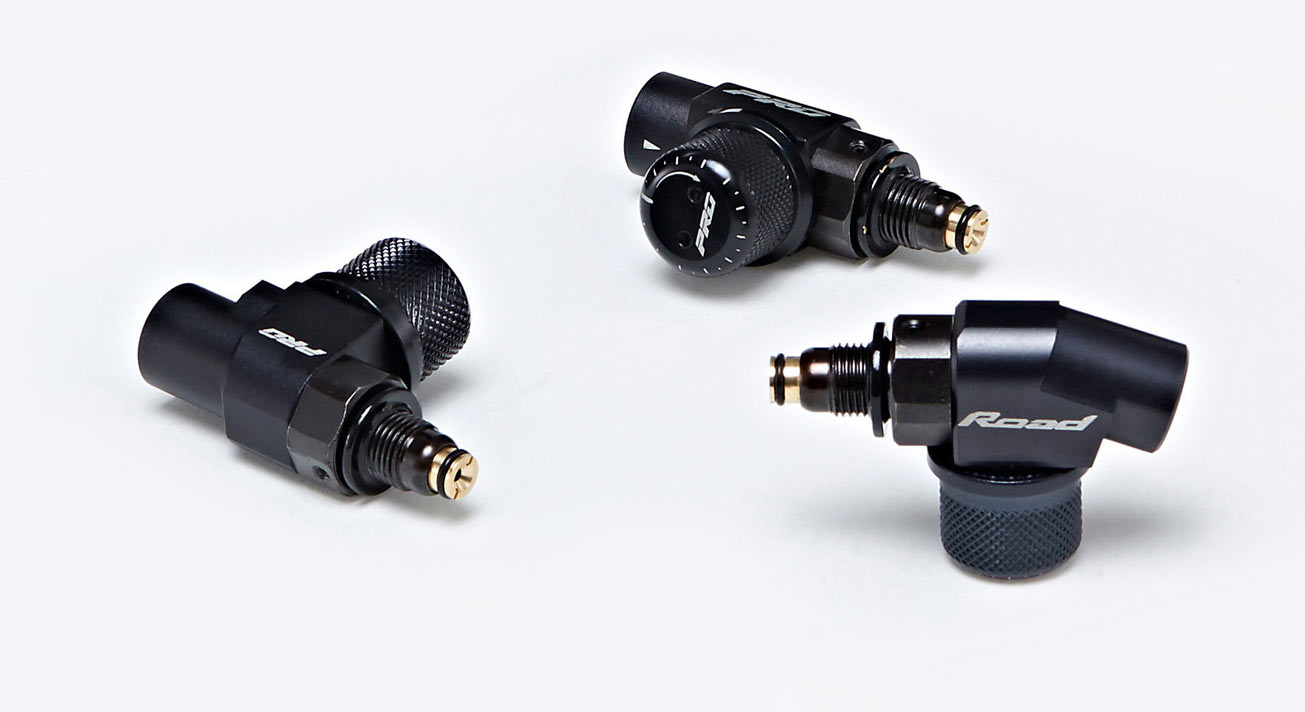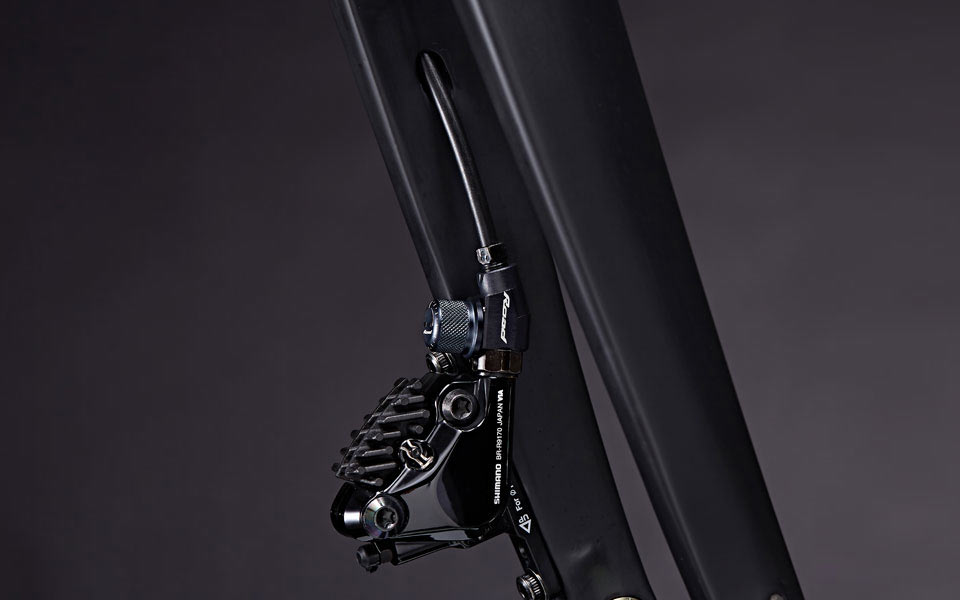The new OutBraker Brake Power Booster is a clever, adjustable inline reservoir that gives you more control over your hydraulic disc brake’s power. Perhaps even more useful, it also gives you the ability to adjust the pad contact point.
And, they say, it’s a universal fit and will work on any brand of brake, for road and mountain bike brakes. Here’s how it works…
The Brake Power Booster is a secondary reservoir that’s added inline on your hydraulic disc brake system. For mountain bikes, it’s added just behind the lever. For road bikes, it’s added just above the caliper. Both function the same way.
It works by giving you the ability to adjust the amount of fluid that’s actually inside the hose at any given point. Twist the adjustment knob one way and it reduces the size of its reservoir and pushes more fluid into the hose, thus moving the pads closer to the rotor and, presumably, adding more power because you’ll have more lever to pull and really clamp down on the rotor.
Twist it the other way and it holds more fluid so there’s less in the hose, and you’ll have to pull more lever to squeeze the pads as hard.
We see the benefit coming more in the ability to adjust your pad contact point. This could let you really dial in the lever feel, and potentially increase leverage over the last bit of the braking point before it simply locks up and skids the wheel. It’s also a great way to adjust for pad wear, even those most high quality hydraulic disc brakes use a lip seal that does this automatically.
What’s the difference between Pad Contact and Free Stroke?
Remember when you brakes were cable actuated and you could dial in that barrel adjuster to move the pads closer to or further from the rim or rotor? That’s what the OutBraker Power Booster does. By adjusting the size of its auxiliary reservoir, it’s either adding or subtracting fluid from the actual brake hose. If it’s adding fluid, the pads will be pushed closer to the brake rotor, and vice versa.
Free Stroke, which some higher end brake levers have, simply adjusts the valve’s closure point within the lever’s master cylinder. By moving it farther from the master cylinder’s port, it lets you pull more lever before it closes the circuit and starts pushing fluid down the hose toward the caliper. So, if you (for some strange reason) like the brake lever to move without actually doing anything, then find one (like the Shimano XTR levers shown here) that offers Free Stroke adjustment.
Outbraker Brake Power Booster specs
The part is made out of aluminum and steel and works with Shimano, SRAM, Magura, Tektro, Formula (2nd edition only) and Hope (Pro edition only) brakes. They say the boost range is up to 180% of the original power. Claimed weight is just 22g. Retail is $179, available now on their website. From the looks of it, this one replaces the prior model with the red adjustment knob as that one’s showing as both discounted and out of stock.
This isn’t their first hydraulic brake power adjuster, but it’s definitely much sleeker than the original, and now it works with drop bar brakes, too. Outbraker also makes dual hose adapters, letting you work both brakes from a single lever (great for folks with special needs), as well as inline anti-lock braking systems.
